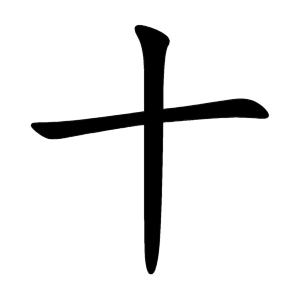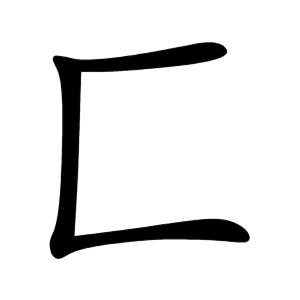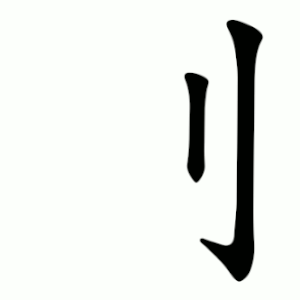Radicals 11-15 (3 of 30)
antony73
June 03, 2009, 10:49 PM posted in General DiscussionFor this post I've included the 笔画/bǐhuà for each 部首/bùshǒu. The animated stroke order will match the 笔画 order. For example, the Radical below is 一 (héng) followed by丨(shù), making 十 (shí)
To get the 笔画 for the previous two Radical posts, see HERE
Tip: Saying the bǐhuà out loud while writing a bùshǒu really does help in remembering the stroke names and the all important stroke order.
shí 'ten'

Strokes: 2 Examples: 古 考 毕
笔画/bǐhuà: héng shù
chǎng 'factory/slope'

Strokes: 2 Examples: 历 厄 厉
笔画: héng piě
fāng 'basket'

Strokes: 2 Examples: 匹 巨 匝
笔画: héng shù zhé
Although this Radical has only two strokes there are three parts, héng shù zhé. Zhé isn't counted as a stroke, only a part of a stroke.
bǔ 'divine'

卜 is a picture or representation of the divination cracks in ancient Oracle Bones.
Also the top part of 占
Strokes: 2 Examples: 外 卧 卦
笔画: shù diǎn
dāo 'side of, abbreviation of knife'

Strokes: 2 Examples: 刚 创 刎
笔画: shù shù gōu
As with the basket Radical fāng, this Radical has only two strokes, yet there are three parts, shù shù gōu. Gōu isn't counted in the stroke count.
Sources: http://www.kzxy.com.cn/Article/ArticleShow.asp?ArticleID=17116#%E4%B8%80%E7%94%BB%EF%BC%885%EF%BC%89 / http://en.wiktionary.org/wiki/Index:Chinese_radical#1_stroke / http://www.mdbg.net/chindict/chindict.php / William McNaughton's Reading and Writing Chinese. Tuttle Language Library
changye
June 04, 2009, 12:11 AM巨 is a little tricky character. It's indexed under the 工 radical (not 匚 radical) in ancient dictionaries (说文解字/字汇/康熙字典etc) and some modern dictionaries (汉语大字典 etc). Please click the link to see the reason.
http://chinese-characters.org/meaning/5/5DE8.html